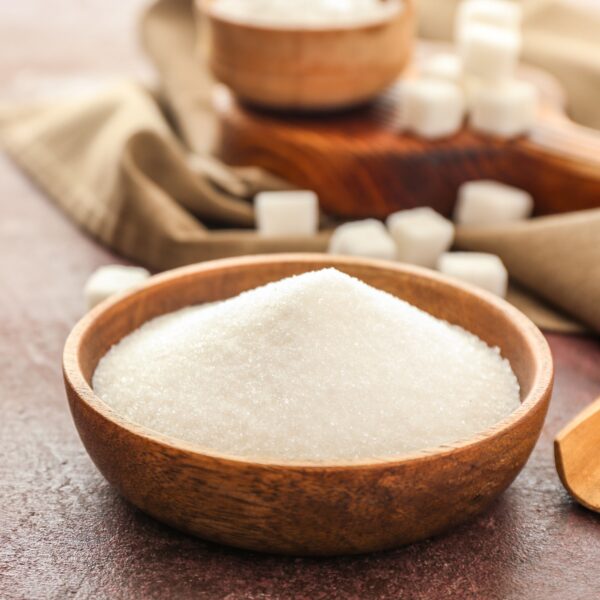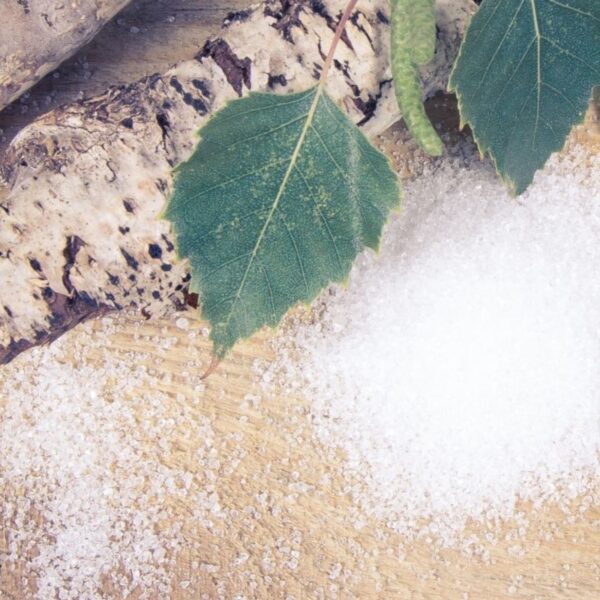Ferric ammonium citrate (iron (III) ammonium citrate) is a chemical compound with molecular formula C6H11FeNO7+3. This compound is commonly used for various purposes, including in the pharmaceutical and food industries as an anticaking agent, acidity regulator, and nutritional supplement.
What is Iron Ammonium Citrate?
Iron ammonium citrate comprises iron III (Fe3+) and citrate ions (C6H5O7 3−) complexed together. The ferric ion acts as the core metal ion in this combination, creating numerous coordination bonds with the citrate ligand. The citrate ions act as a chelating agent. This chelation process helps to prevent iron from forming insoluble precipitates or interacting with other compounds that could affect its stability or bioavailability.
Source: Wikipedia
How is Iron Ammonium Citrate Produced?
Ferric ammonium citrate is prepared by reacting ferric hydroxide with citric acid, followed by treatment with ammonium hydroxide, evaporating, and drying. The resulting product occurs in two forms, depending on the stoichiometry of the initial reactants:
- Green hydrated form: Ferric ammonium citrate (iron (III) ammonium citrate, CAS Reg. No. 1333–00–2) is a complex salt composed of 14.5-16% iron, approximately 7.5% ammonia, and 75% citric acid and occurs as thin transparent green scales, as granules, as a powder, or as transparent green crystals.
- Brown hydrated form: Ferric ammonium citrate (iron (III) ammonium citrate, CAS Reg. No. 1332–98–5) is a complex salt of undetermined structure composed of 16.5-18.5%iron, approximately 9% ammonia, and 65% citric acid and occurs as reddish brown or garnet red scales or granules or as a brownish-yellowish powder.
Applications in Food and Nutrition
| Function | Applications |
| Anticaking Agent | Iron ammonium citrate is in food products to prevent the formation of lumps or clumps in powdery or granular products. |
| Acidity Regulator | Iron ammonium citrate is generally soluble in water. The resulting solutions contain moderate concentrations of hydrogen ions and have pH levels of less than 7.0. They react as acids to neutralize bases. |
| Iron Supplement | Iron ammonium citrate is an iron supplement that provides the body with elemental iron. |
Product Examples
Iron ammonium citrate is used in salt and salt mixes as an anticaking agent. It can also be used for powder premixes for bakery, savory, and convenience food products as an anticaking agent and acidity regulator. It’s also sometimes used in beverages. For example, Irn-Bru is a beverage made in Scotland known for its bright orange color and unique flavor–it contains 0.002% ammonium ferric citrate. Iron ammonium citrate can be used in nutraceuticals and supplements as a source of iron.
Properties of Iron Ammonium Citrate
| Physical Form | Powder, granules, crystals |
| Color | Brown-yellow to brown or green |
| Odor | Faint odor of ammonia |
| Shelf Life | 12 months |
| Storage Temperature & Conditions | Cool, dry place |
| Molecular Weight | 265.00 g/mol |
| Appearance | Yellowish brown to red solid or green |
| Density | 1.06 g/cc |
| pH | 6-8 (100g/l, H2O, 20℃) |
| Melting Point | >193°C |
| Solubility (20°C) | 1200g/l |
Typical Formulations
Pressed Salt Product
Here is an example formulation of a pressed salt product with iron ammonium citrate, along with the composition of the ingredients:
| Ingredient | Composition |
| Salt | 250 g/L |
| Iron ammonium citrate | 17 g/L |
| H2SO4 | 45 g/L |
Conventional anticaking additives prevent caking when the salt is stored but interfere with pressing the salt into a specific shape. The dry strength of the salt-containing iron ammonium citrate complex performs better than that of products pressed using salt with a conventional anti-caking agent.
Source: Google Patents
Formulation Considerations
| Stability | Iron ammonium citrate emits acrid smoke and irritating fumes when heated to decomposition. Decomposition occurs via six weight-loss processes and three endothermic (90-230°C) and three exothermic (240-298°C) processes, leading eventually to the formation of Fe2O3. It is hygroscopic. |
| Nutritional Profile | Iron ammonium citrate contains 14-18% iron. |
| Sensory Attributes | It has a weak iron taste and a slight ammonia odor. |
| Interaction with Other Components | It can interact with bases in a solution. It is incompatible with strong oxidizing agents. |
Ferric Iron
Ferric ion is a component of many enzymes necessary for energy transfer (cytochrome oxidase, xanthine oxidase, and succinic dehydrogenase), and it is also present in compounds necessary for the transfer and use of oxygen (hemoglobin and myoglobin).
Pharmacokinetics
Absorption: Iron absorption is influenced by several factors, including the form in which it is administered, the dose, the iron reserve, the erythroid degree, and diet. In one study, healthy subjects absorbed approximately 5-10% of dietary iron, while iron-deficient subjects absorbed 10-30%. Dietary iron absorption is primarily performed through enterocyte cells on the duodenum and upper jejunum of the small intestine. Because humans do not have an active iron excretion system, intestinal iron absorption is critical for maintaining iron balance in the body.
Distribution: Ferric iron Fe++ passes through the lining of the gastrointestinal tract directly into the blood and is immediately linked to the carriers. The β1-globulin transporter takes iron to bone marrow, which is incorporated into hemoglobin. Approximately 70% of iron is found in hemoglobin, 25% in ferritin iron and hemosiderin, 4% in myoglobin, 0.5% in hem-enzymes, and 0.1% in transporters.
Elimination: The large amount of iron emanating from the destruction of hemoglobin is conserved and reused by the body.
Iron Supplements
Iron fortification is commonly practiced in food manufacturing to ensure that consumers receive adequate iron intake, especially in populations where iron deficiency is prevalent. Iron III ammonium citrate is typically chosen as a fortifier due to its stability and bioavailability.
When added to food products, iron III ammonium citrate provides a source of iron that the body can readily absorb. This is important because not all forms of iron are easily absorbed by the human digestive system. By using iron III ammonium citrate, food manufacturers can enhance the iron content and improve the nutritional value of their products.
Ferric salts are not preferred over ferrous salts as the ferric ion first requires reduction to ferrous form in the intestinal lumen. Ferric ammonium citrate is highly soluble in water compared to ferric citrate, which is not readily soluble in water.
The complex formation between iron III and ammonium citrate enhances the solubility of iron in water, making it easier for the body to absorb. This is important because iron needs to be dissolved in the acidic environment of the stomach before it can be absorbed into the small intestine.
Safety and Regulatory Considerations
| FDA Information | The FDA permits iron ammonium citrate to be used as a food additive for direct addition to food for human consumption. It is allowed as an anticaking agent in edible salt with a maximum dosage of 25 ppm in the finished product. |
| JECFA (WHO) | Per the JECFA, iron ammonium citrate is classified as a food additive for applications as an anticaking agent and nutrient supplement. |
Health Effects of Iron Ammonium Citrate
- Prevents anemia: The body cannot produce sufficient hemoglobin when iron is deficient, leading to iron-deficiency anemia. By supplying iron, iron ammonium citrate can help to boost hemoglobin production and prevent or treat this type of anemia. Iron ammonium citrate is a complex salt that can be used as a source of iron in the body. Ferric ammonium citrate has been reported as an efficient oral hematinic as ferrous sulfate.
- Antiviral activity: In a study, ferric ammonium citrate inhibited Influenza A virus, HIV, Zika, and Enterovirus 71 (EV71) infections. It inhibited viral infection by inducing viral fusion and blocking endosomal viral release.
Identification Numbers
| IUPAC Name | azane;2-hydroxypropane-1,2,3-tricarboxylic acid;iron(3+) |
| CAS Number | 1185-57-5 |
| EC Number | 214-686-6 |
| INS No. (Food Additive) | INS 381 |
| E Number (Food Additive) | E 381 |
Acceptable Limits or Maximum Usage
As per the WHO, the maximum tolerable intake of iron ammonium citrate in food is 0.8 mg/kg bw. As a nutrient supplement for iron, the group’s provisional maximum tolerable daily intake must be expressed as per iron.
The GFSA provision for the maximum usage level of iron ammonium citrate for the food category — “concentrates (liquid or solid) for water-based flavored drinks” — is 10 mg/kg.
Fun Facts About Iron Ammonium Citrate
- Iron ammonium citrate can be employed in water treatment processes. It can help to precipitate and remove certain impurities from water, making it suitable for various industrial and municipal applications.
- Iron ammonium citrate is sometimes used in agriculture as a source of iron for plants. It can be added to soil or applied as a foliar spray to correct crop iron deficiencies.




